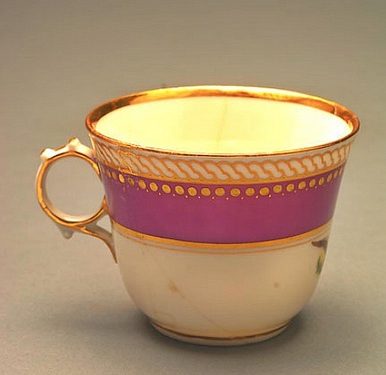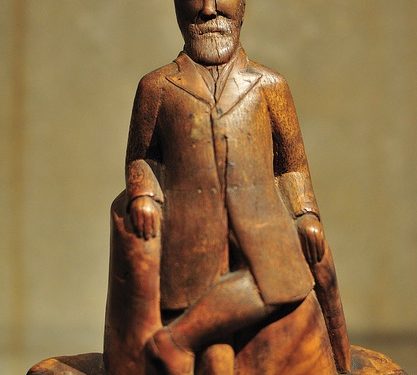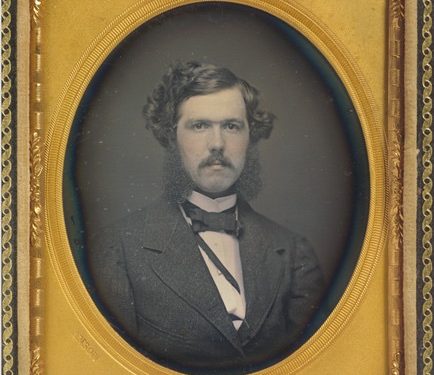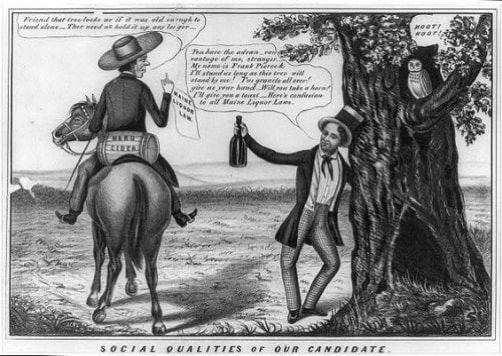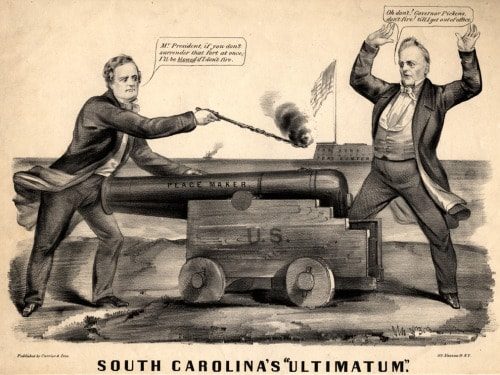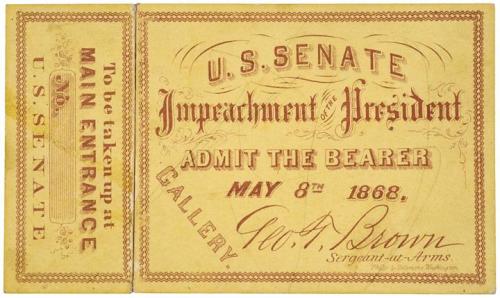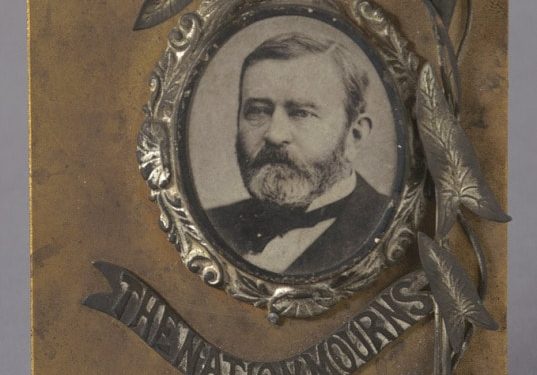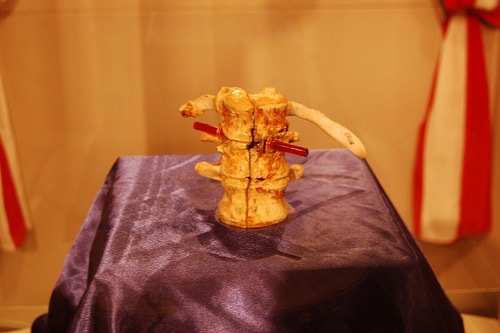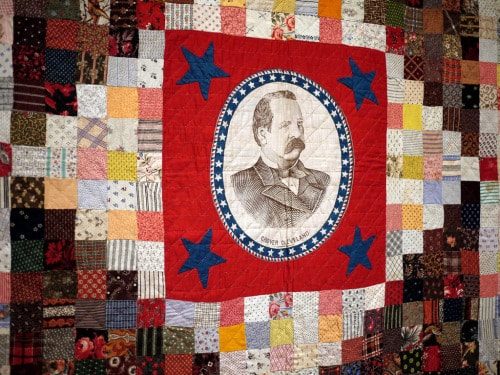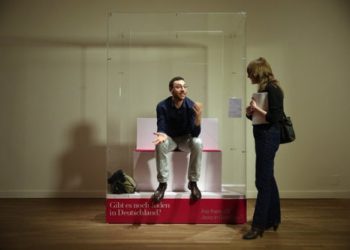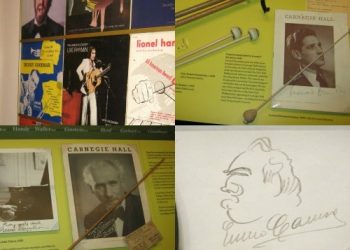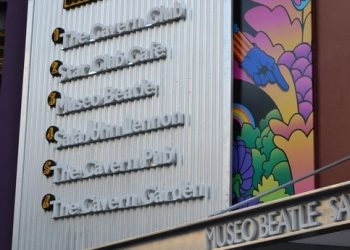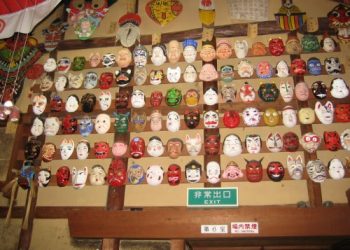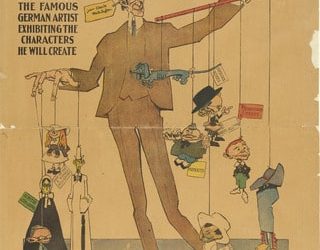Today is Presidents’ Day in the United States of America, which means you’re supposed to buy a mattress on sale and maybe learn a few things about the forty-four men who got to call themselves commander-in-chief. So let’s continue where we left off (check out Part 1 if you missed it and please look for Parts 3 & 4 tomorrow).
Political commentator John Oliver once said “American Politics is a circus of crazy.” And he’s not wrong. Just look at the 2016 presidential election. Speaking of circuses, here is a hand-colored woodcut illustration of President Millard Fillmore in a procession passing by Barnum’s American Museum on Broadway in New York City in 1851. He’s the guy in the horse carriage, in case you couldn’t figure it out.
Franklin Pierce was probably our first alcoholic president. In this political cartoon you can see then Senator Franklin Pierce, the Democratic Party’s presidential candidate in 1852, leaning against a tree, obviously inebriated, holding out a bottle to a passer-by. It mockingly references the Maine Liquor Law of 1851, a landmark prohibition measure that was subsequently adopted in several other states. Although a war hero, the opposition party liked to call Pierce “the hero of many a well-fought bottle.”
Our only bachelor president, James Buchanan is also considered one of the worst for his failure to deal with secession of southern states and the formation of the Confederate States of America. Here is another political cartoon from the Library of Congress spoofing Buchanan’s compromises to the South on slavery. He tells the governor not to fire until he’s out of office, which is exactly what happened.
Because we like to save everything Abraham Lincoln ever touched, the Smithsonian’s National Museum of American History has his very last coffee cup. Long after Lincoln’s assassination in 1887, Capt. D.W. Taylor presented the cup to Robert Todd Lincoln, the oldest of his four sons. He explained that a White House servant had seen the President leave the cup behind on a windowsill just before departing for Ford’s Theater and had preserved it as a relic of that tragic night. Doubtful anyone would do the same for my Starbucks coffee!
Andrew Johnson was the first president impeached. Why? He quickly readmitted the former Confederate states into the union and vetoed important civil rights bills, which outraged Radical Republicans in Congress. The House of Representatives impeached Johnson in 1868, but he was acquitted by a single vote in the Senate. Visitors to the Andrew Johnson National Historic Site get to cast their own vote. They’re given a replica of the ticket and are encouraged to tear the end tab from their ticket and vote in a ballot box for Johnson’s acquittal or guilt. Each year he is found “Not Guilty” by a wide margin.
On his radio and television show You Bet Your Life, comedian Groucho Marx often asked contestants, “Who was buried in Grant’s Tomb?” The correct answer is “no one,” since Grant and his wife are not buried but entombed in sarcophagi above ground. When Ulysses S. Grant died in 1885, everyone was pretty upset. After all, he was a war hero. A quarter of a million people viewed his body in the days leading up to his funeral, with 1.5 million people in attendance. “The Nation Mourns” memorial photograph is from Cornell University Library.
This little wood carving, on display at the National Portrait Gallery in Washington D.C., made for the Presidential campaign of Rutherford B. Hayes in 1877 looks harmless, but it was part of one of the most contentious elections of American History. Hayes lost the popular vote to Samuel Tilden, yet won the electoral vote after 20 electoral votes were awarded to him by the Congressional committee. Remember in America we can’t just have the person with the popular vote get into the office. Remember Bush vs. Gore?
During James Garfield‘s assassination on July 2, 1881, the president was shot twice with one bullet piercing his back. His spinal column, showing exactly where the assassin’s bullet had passed, was once on display at the National Museum of Health and Medicine in Washington, D.C. Let’s hope this medical oddity emerges from the museum’s archives, which also owns some of Lincoln’s skull fragments and Eisenhower’s gallstones.
Chester Alan Arthur was known as a bit of a dandy, who liked to wear stylish clothes and entertain lavishly at the White House, hosting parties that would last for hours and hours. He was also known for his mutton chops, as seen here in this daguerreotype from 1858, part of the National Portrait Gallery collection, of a serious young man with serious facial hair. He was probably born with sideburns.
Who doesn’t like a presidential quilt? The tradition dates back to the Colonial Period. Quiltmakers not only honored the nation’s presidents in their quilts, especially during election season, but created colorful cultural and historical documents. This one of the 22nd (and 24th) president Grover Cleveland is on display at the American Folk Art Museum in New York City.

